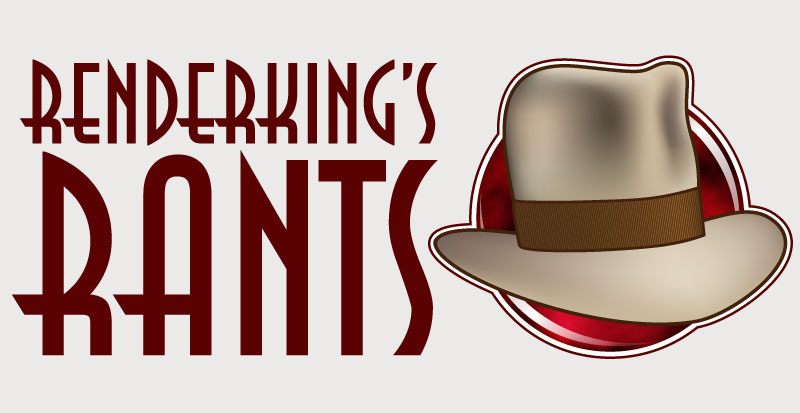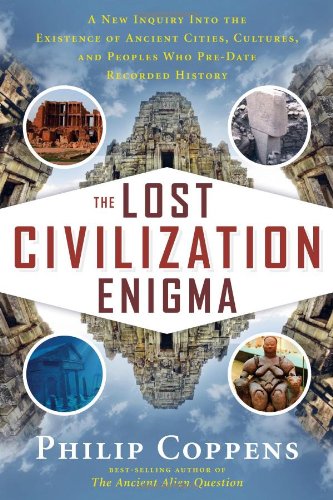
“The Lost Civilization Enigma: A New Inquiry Into the Existence of Ancient Cities, Cultures, and Peoples Who Pre-Date Recorded History” By Philip Coppens
Reviewed by Eric Renderking Fisk. | June 29, 2014
Upon starting this book I had to tackle the premise which I’ll borrow from the publisher’s summery...
“Are history books giving us the whole story? Or is civilization far more complex and for older than we have been taught? Our school textbooks barely mention the 6,000-year-old Sumerian civilization, yet the latest archaeological findings at sites such as Jericho, and most recently, Gobekli Tepe in Turkey, have been dated to 10,000 BC. Civilization goes back at least another 10,000 years, if we are willing to believe what our ancestors themselves claimed…” Do we actually know “the truth” about the history of the world or are there huge chucks[SIC] that are missing from our knowledge? And if we found evidence that disproves some of our assumptions would the Archeology academic community embrace it or would they shun any new evidence that conflicts or constricts what we think we actually know?
 Phillip Coppens accomplished two remarkable things simultaneously in “The Lost Civilization Enigma,” the final book that he wrote just before his passing.
Phillip Coppens accomplished two remarkable things simultaneously in “The Lost Civilization Enigma,” the final book that he wrote just before his passing.
First, this book is a primer about all the essential theories and accompanying facts and discoveries about lost civilizations. First, this book is a primer about all the essential theories and accompanying facts and discoveries about lost civilizations. If you are already familiar with many out of place artifacts (also known as “OOPArts”) that he writes about in this book, he reacquaints the reader in such a helpful way without insulting our intelligence.
For those of us who are new to lost civilizations, some of the information might be overwhelming since much of it overlaps on the timeline. Mr. Coppens was able to help you, the reader, understand that this “overlapping” of specific events could be evidence of a once-thriving global community. Were it not for Mr. Coppens writing style and his faith in the readers’ intelligence, this theory’s importance would be lost on fresh enthusiasts.
The best example is the little-known pyramids that have been discovered around the world in places like rural China and Bosnia that rival the most famous ones Egypt and the Americas. Since these structures are so similar to each other, one could theorize that there could have a once-thriving global community intertwined via international trade thousands of centuries ago.
The second most astonishing thing he’s done in this book is explaining the story behind main-stream academia’s attempts and squelching the “Ancient Global Civlization” hypothesis.
Starting with “Chapter 1: The New Inquisition,” he lays the groundwork by explaining why modern academia in archeology likes to ignore important finds. The short version of this dilemma is that there are too many main-stream archeologists and archeology departments that have dedicated their entire careers to a specific belief in certain theories. The discovery that might prove their favorite theory is wrong might put their entire careers into question and could close the aforementioned academic department.
Were there to be genuine hard evidence that proves that everything we believe is wrong (as the rest of the book details), it could cause an upheaval in people’s lives; change is hard and something some folks won’t tolerate. Some people would go to great lengths to maintain their prior beliefs rather than change to suit new data.
The best analogy I can think of someone like myself going to a professor and saying, “they found evidence of a culture that existed in Antarctica,” only to have the professor pull out a 50-year-old book and say, “See, that’s wrong. It says right here in this book that there is no evidence of any civilization living in Antarctica!”
“But professor,” I exclaim, “they just discovered this brand evidence.”
“Mr. Fisk, you should know better than to trust new evidence when older books say otherwise!”
Imagine for 5 minutes what the world would be like if other fields of study like physics and electronic engineering had this attitude.
Shunning new finds is a mere act of survival for some while forgetting that new discoveries will open new doors to academia.
The following chapters, “Lost Civilizations of the Old World” and “Lost Civilizations of The New World,” chronicle discoveries found in the past few centuries that indeed contradict that civilization is only 44,000 years old with artifacts and settlements that go back even further. Were I to tell you that the great pyramids in Egypt weren’t the biggest in the world, you might be shocked – which is something “The Lost Civilizations Enigma” covers in these chapters. There are plenty of landmarks and artifacts throughout the world that shouldn’t be according to archeological dogma, such as Pyramids that mimic the style of the ones in Giza found in what we now call Bosnia and deep into rural China.
Perhaps the most haunting of these chapters are the stories of underground tunnels and copper mines in the region we now call Illinois and Michigan. Thousands if not millions of tons of copper were removed from this region, but there is little evidence of who did it and where the copper went while only a few remnants of mining camps and winter homes below the snow line remain.
Mr. Coppans also tackles the issue of Atlantis and its descriptions in Plato’s writings, where it could have been and where could it have gone? There are two great theories that I would like to cover in-depth more, such as the notion that Atlantis could have been in the plains of the Mediterranean before it was flooded to become a sea.
Or Atlantis was not an actual place, but a collation of civilizations around the Atlantic Ocean that contributed to the Pyramids buildings found worldwide – such as the one mentioned earlier located in Europe, Asia, and Africa. If this idea of Atlantis is more of a group of countries, finding it’s actual location would be just as hard as finding the location of “NATO” 2,000 years from today.
The other chapters that remain dig deep into mind-blowing concepts such as how many cultures used geometry to find the exact center of their region and built their capitals there in that location. He also reveals how many capitals and areas of interest line up with the lines of longitude and latitude. He then tackles the concept of “As Above So It Is Below,” many cultures throughout the world modeled their community centers or capitols’ layouts to mimic or mirror the constellation of Orion.
And for fans of “Indiana Jones” and “Lara Croft,” there are more than enough ancient artifacts to keep scriptwriters busy for ages. Many of these artifacts that are discussed are great mysteries and out of time. Once such ““OOPArt” is the Antikythera, a device that charted the phases of the moon, the position of the five other known planets at the time, and the movement of the sun. There are so many objects that defy logic through the eyes of traditional academia.
A great deal of this book covers other lost civilizations that we hardly ever hear about, such as “The Lost Civilization of Mu.” Mu was either the origin of Atlantis and the builders of the pyramids in China. Or Mu was a rival of Atlantis that could have been the precursor to the Cold War between The United States and Russia.
To his credit, he also spent considerable time explaining how some finds were fraudulent and the forgers’ motivations, which – to this reviewer – just adds to his credibility. He’s done the work that the current establishment refuses to do had the courage to put his name on his work. Hopefully, there could be a time when some of these theories are more main-stream, and he gets the proper credit he deserves.
By the end of this book, many readers are left with a sense of awe and wonder about our past and the uncomfortable notion that we may never know what really happened and everything we think we know as “facts” and “the truth” is wrong. If everything in this book is accurate and not mere “pseudoarchaeology.” then there is an apparent suppression of the facts, and the world’s history is nothing like what we believe. It’s enough to keep people like myself out there wondering what else is ready to be discovered and what other secrets are kept behind the university and museum walls.
At the beginning of every episode of The X Files, we were told “The Truth Is Out There…” appropriately, this book ends with its coda that dove-tails perfectly: “We were not the first here on Earth...”






